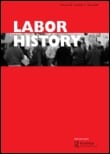This study argues that re-formation of working-class identity was crucial for the construction of a cohesive labour movement in Sweden. Analysis of the materials used in trade union study circles in the 1920s and 1930s reveals that the organizational identity constructed by the leadership was closely linked to the organization as a phenomenon rather than to the class structure on which it was based.
